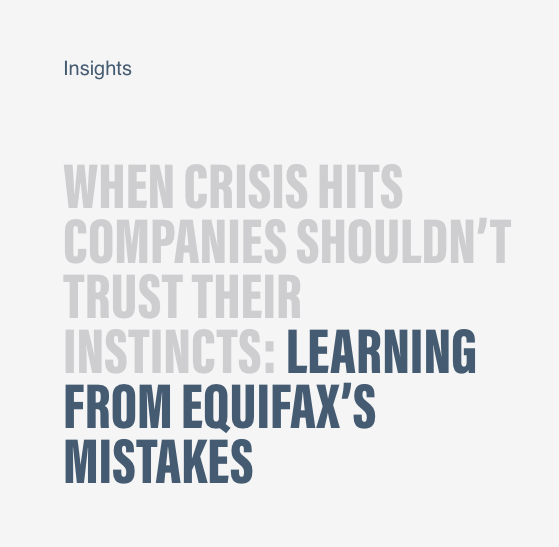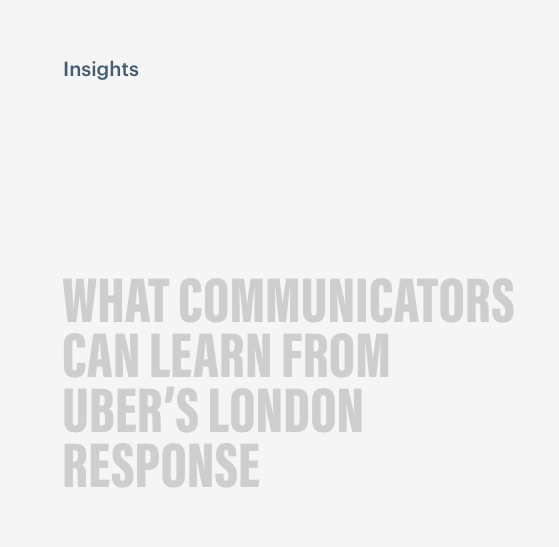Sustainability goals alone don’t tell the whole story
Today, more companies taking the lead on social issues like climate change and sustainability. At least one fifth of the world’s largest companies are committed to meet net zero targets by 2050, and some have committed to more aggressive targets, like pledging to be carbon-negative by 2030. The latest IPCC report heightened urgency to a “code red” to rethink the way we do business, in order to avert planetary disaster and advance corporate success.
We’re hearing more and more from clients who are excited by the meaningful impact their organizations are having but who are frustrated when their sustainability story falls flat with employees, customers, and investors. Especially when their investment in crafting the sustainability story has taken years of work and immense internal (and external) buy-in.
So where’s the disconnect? After collecting sustainability narratives from 40+ corporations over the past 6 months, the main pitfall we see is that most companies aren’t telling a sustainability story–they’re listing their sustainability goals. Take the following examples:
- By 2030 our company will be carbon negative
- We are launching a program to cut our carbon emissions by more than half by 2040
- We’re cutting the cost of solar energy by 60% by 2030
When you use your goals as a key component of your story, you’re missing out on a bigger opportunity to connect with your investors, customers, and employees. And importantly – you’re missing an opportunity to create differentiation and distinction for your brand. Because goals alone aren’t your story–they’re proof of your story. If you want to be perceived as a sustainability leader driving planetary and business resilience, you have to tell a story that: 1) aligns your sustainability goals with what people already know about you; 2) describes the specific actions you’re taking and why they matter; and 3) illustrates where you’re going to get your employees, investors, and customers excited about what’s next.
Here’s how you can start:
1) Bring your company’s core values into the conversation. Unless you explain how sustainability fits in with your company’s purpose, it won’t sound authentic–and audiences can smell “greenwashing” from a mile away. Your audience wants to know how sustainability fits with your brand. Consider this language from HP:
“At HP, we are on a journey to keep reinventing everything we do. Our aim is to make life better for everyone, everywhere. At the heart of our reinvention is the need to create a business that can have a lasting sustainable impact on the world. This is not just the right thing to do, it fuels our innovation, our growth, and creates a stronger and healthier company for the long term.”
By first introducing its mission (“to keep reinventing everything we do”) and illustrating why it matters (“to make life better for everyone, everywhere”), HP credibly positions sustainability as part and parcel of its raison d’etre. And, by directly addressing the misconception that integrating sustainability into its business model is “not just the right thing to do,” HP demonstrates that sustainability is central to its business success (“fuel[ing] our innovation, our growth”) and ability to achieve its vision by creating a “healthier company for the long term.”
2) Leverage your heritage to build credibility. If you announce sustainability efforts in a vacuum, your audience might wonder if you’re just trying to keep up with the status quo. Chances are, actions you’ve taken in the past have already helped reduce pollution or energy consumption–you just might not have been thinking about them as part of a sustainability agenda. Integrate actions you’ve already taken into your story to show your audience that sustainability has always been one of your priorities, and that you have the track record to prove it. Consider this language from Unilever:
“Back in 1883, Sunlight Soap was launched in the UK by our founder – it was pioneering, it was innovative and it had a purpose: to popularise cleanliness and bring it within reach of ordinary people. That was sustainable living, even then. We now have over 400 brands and we are still driven by purpose.”
By highlighting the purpose of its oldest brand (“to popularise cleanliness and bring it within reach of ordinary people”) and tying that purpose to “sustainable living,” Unilever positions itself as a company that always has been–and always will be–driven by purpose and sustainable living (an example of what we call “evolutionary framing”).
3) Be specific about what you’re doing to create change. With so many companies committing to net zero emissions and carbon intensity reduction, it’s tough to break through the noise. If you use buzzwords like “net zero emissions” and “carbon intensity targets,” you’re likely to lose your audience because they can’t understand what you’re actually doing, or how it’s creating a healthier earth. Lead with the broader actions you’re taking, and then get into the specifics to give your audience a visual understanding of what you’re doing on a day-to-day basis to make a difference. Chances are, readers are thinking about taking similar steps in their daily lives, so hearing about what you’re doing builds empathy and appreciation for your actions–and may even inspire others to follow in your (carbon-reduced) footsteps.
| Lead with the broader action you’re taking… | …then get into specifics |
| We are sourcing renewable energy for 100% of our power needs | In 2020, we installed solar panels on each of our 150 offices around the globe. We are sourcing all of our electricity from wind and solar farms 75% of our products this quarter are made with recycled materialsWe have installed LED lighting systems at 500 branches and 43 commercial offices |
4) Illustrate where you’re going, and why. Lastly, it’s critical to tie your actions to your future goals and vision of success. Sharing measurable goals shows how you’re holding your company accountable for change, building long-term trust with your audience. Meanwhile, painting a picture of what success looks like to you helps your audience understand why you want to get there in the first place–and gets them excited about coming along for the ride.
Importantly, remember that your sustainability story is a journey, not just a destination. The work here is never done, so your story shouldn’t be, either. Highlight your successes and goals in a way that’s authentic to your corporate identity, while acknowledging that your efforts are a work in progress.
Consider this language from the L’Oreal Group:
“Today, sustainability is at the heart of the Group’s strategy, governance and performance. But we know that we must go further. The decade before us is critical for the planet. The urgency is there. We collectively have a decade to act.”
Here, L’Oreal highlights its progress to date (“today, sustainability is at the heart of the Group’s strategy”) before quickly pointing out that its work isn’t finished (“we must go further”). Moreover, by creating an imagined “us,” L’Oreal positions itself as a leader in the space and creates a call to action for others to reduce their negative impact on the planet.
As the latest IPCC report showed, we have one small, final window of opportunity to act effectively on climate change. Sustainability isn’t just a buzzword or a finite reporting metric: it’s a moral imperative to protect the world we live in, and the words we use to talk about it have never mattered more. When crafted correctly, the story you tell about the actions you’re taking to create a more sustainable future can unite your employees, clients, customers, and investors around a common purpose–and inspire them to make meaningful changes of their own.
Want to tell a sustainability story that truly makes a difference? We can help. Get in touch with us today.
RESEARCH PERFORMED AND PREPARED BY: Hannah Sullivan, Senior Language Strategist at maslansky + partners









